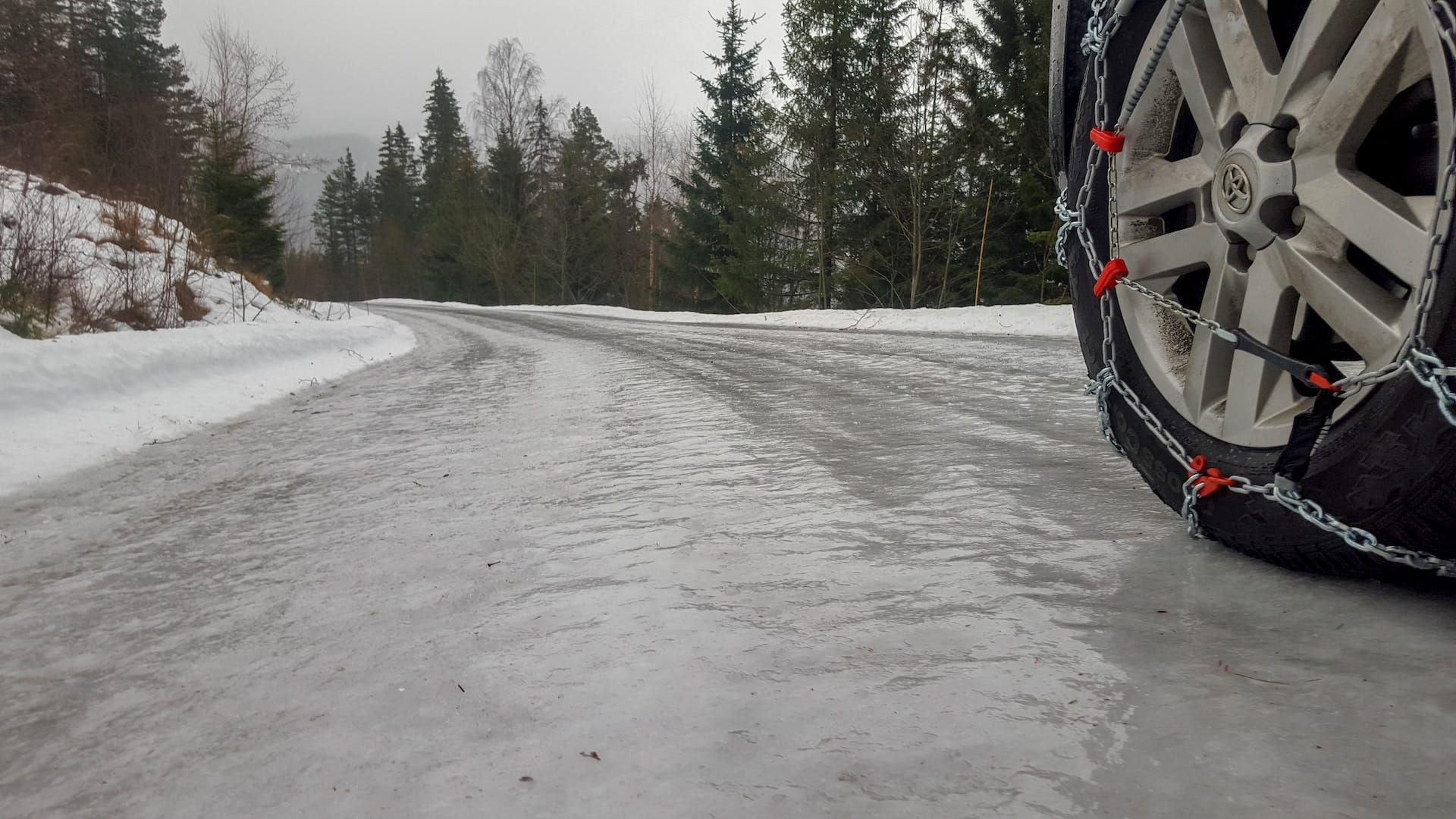
Driving on icy roads requires careful attention and skill, especially if you encounter a skid. This guide outlines key strategies to help you regain control safely, prioritizing your safety and that of others on the road.
Understanding the Dynamics of Ice
The Danger of Overreacting
In an icy skid, your instinct might be to brake immediately, but this can often worsen the situation. Sudden braking on ice can lead to a loss of control.
Importance of Remaining Calm
Staying calm is crucial. Panic can lead to hasty decisions, which might be dangerous.
Correct Response to a Skid
Steering to Regain Control
If your car begins to skid, steer gently in the direction you want to go. This technique, known as ‘steering into the skid’, helps realign the car’s direction.
When your car starts to skid, it means that the tires have lost their grip on the road surface. This loss of traction causes the vehicle to slide in an uncontrolled manner. The direction of the skid depends on which set of wheels has lost traction:
- Rear-Wheel Skid: If the rear wheels lose traction, the back of the car will start to slide sideways. This is often referred to as oversteering.
- Front-Wheel Skid: If the front wheels lose traction, typically under heavy braking or acceleration, the car will continue straight ahead despite turning the steering wheel. This is known as understeering.
Steering Into the Skid
- Rear-Wheel Skid (Oversteer): If your car’s rear end is sliding to the right, you should gently steer to the right. If it’s sliding to the left, steer to the left. By doing this, you align the front wheels with the direction of the skid, and this realignment helps regain traction and control.
- Front-Wheel Skid (Understeer): In this case, you should ease off the accelerator (or the brake, if you’re braking) and steer in the direction you want to go. This action reduces the speed and allows the front tires to regain grip, pulling the car back onto the intended course.
The Principle Behind It
The technique works because it helps the tires regain their grip by aligning them with the direction of the vehicle’s movement. When the tires are aligned with the skid direction, they can create more friction with the road surface, which helps to stop the skid and allows you to steer the vehicle more effectively.
What Not to Do
It’s important not to panic and steer too sharply or in the opposite direction of the skid, as this can cause the vehicle to spin. Also, avoid slamming on the brakes, as this can make the skid worse, especially if the vehicle is not equipped with ABS.
In summary, ‘steering into the skid’ means adjusting your steering to align with the direction your car is sliding. This action helps to regain traction and control of the vehicle. Practice and experience can improve your ability to handle skids effectively, making it a valuable skill for driving in slippery conditions.
Managing Your Speed
Instead of braking immediately, first ease off the accelerator. This gradual approach helps in regaining traction and control.
Advanced Maneuvering in Skid Situations
Handling Traffic During a Skid
Be aware of your surroundings. Use turn signals if possible to communicate with other drivers. If a collision seems imminent, steer towards a less harmful area like a snowbank.
Controlled Braking
If braking is necessary, the method depends on your brake type. With ABS, apply steady pressure. Without ABS, gently pump the brakes. Braking should be a measured response, not a reflex.
Post-Skid Procedures
Assess and React
After regaining control, assess the situation. If your car or you are not in a state to continue, safely pull over. Turn on your hazard lights and, if needed, seek assistance.
Resuming Your Journey
Once everything is under control, continue driving with heightened caution. Adjust your speed according to the road conditions.
Proactive Safety Measures
Preparing for Winter Driving
Equip your vehicle with appropriate winter tires. Practice driving in a controlled environment to understand how your car responds to skids.
Continuous Vigilance
Always maintain a safe following distance. Remember, the effectiveness of AWD or 4WD is limited on ice, especially regarding braking.
Handling Skids on Ice: Differences Between Automatic and Manual Transmission Vehicles

Handling a skid on icy roads can be slightly different depending on whether you’re driving an automatic or a manual transmission vehicle. Here are the key differences:
For Automatic Transmission Vehicles
- Ease Off the Accelerator: In an automatic car, simply lift your foot off the gas pedal when you start to skid. This helps to reduce speed gradually.
- Steering into the Skid: This is the same for both automatic and manual cars. Steer gently in the direction you want to go to regain control.
- Braking: If you need to brake, do so gently. With ABS, apply steady pressure. Without ABS, pump the brakes gently.
- Avoid Using Cruise Control: In icy conditions, it’s best not to use cruise control in automatic vehicles, as it can hinder your ability to quickly adjust speed.
For Manual Transmission Vehicles
- Depress the Clutch: As you start to skid, depress the clutch along with easing off the accelerator. This disconnects the engine from the wheels, which can help in regaining traction.
- Steering into the Skid: Like in automatic cars, steer in the direction you want to go. This helps in aligning the vehicle correctly.
- Braking: The technique is the same—apply steady pressure if you have ABS, or gently pump the brakes if you don’t.
- Gear Selection: After regaining control and as you recover from the skid, re-engage the gear carefully. Choose a lower gear if you need more control or are going uphill, or a higher gear if you are on a level surface or going downhill.
General Tips for Both Transmission Types
- Stay Calm: Regardless of the type of transmission, remaining calm is vital.
- Controlled Movements: Avoid sudden turns, brakes, or accelerations.
- Awareness: Be aware of your surroundings and adjust your driving to the conditions.
- Preparation: Ensure your vehicle is equipped for winter conditions, including having appropriate tires.
Understanding the nuances of your vehicle’s transmission can help in effectively managing a skid on ice, contributing to a safer driving experience in winter conditions.
Importance of Tire Condition
The condition and type of your tires play a crucial role in how well you can regain control if your vehicle starts sliding on ice. Here’s how tires impact your vehicle’s handling in icy conditions:
Importance of Tire Condition
Tread Depth
- Adequate Tread: Tires with sufficient tread depth provide better traction on all surfaces, including ice. The tread allows the tire to grip the road better.
- Worn Tires: Tires with worn-out treads are much less effective on ice. They significantly reduce your ability to steer, brake, and accelerate safely.
Tire Pressure
- Proper Inflation: Properly inflated tires maintain optimal contact with the road, which is essential for handling, especially in slippery conditions.
- Under or Over-Inflated Tires: Incorrect tire pressure can lead to reduced traction and increased chances of losing control.
Types of Tires
All-Season Tires
- These tires provide decent performance in various conditions, but they might not offer the best grip on ice compared to winter tires.
Winter Tires
- Specialized Design: Winter tires are specifically designed for cold temperatures and icy conditions. They remain softer in cold weather, providing better traction.
- Tread Pattern: The tread pattern on winter tires is designed to channel snow and slush and reduce the buildup of ice.
Studded Tires
- In some regions, studded tires are used for extra traction. The metal studs provide additional grip on ice, but they can be damaging to road surfaces and are illegal in some areas.
The Role of Tires in Skid Recovery
When your vehicle starts to slide on ice:
- Good Tires: With adequate tread and proper inflation, your tires can help you maintain some level of control, making it easier to steer into the skid and regain control.
- Winter Tires: These can be particularly effective in quickly regaining control due to their enhanced grip on icy surfaces.
In summary, the state of your tires is a significant factor in your vehicle’s ability to handle icy conditions. Well-maintained, appropriately chosen tires for the season can greatly assist in regaining control during a slide on ice. Regular tire checks and considering winter or studded tires in regions with severe winter conditions can enhance your safety on the road.
Safe Winter Driving: Understanding the Use of Tire Chains and Speed Management on Icy Roads

Using chains on tires and managing speed are both important aspects of driving safely on icy roads. Here’s a breakdown of each:
Use of Tire Chains
When to Use Tire Chains
- Severe Winter Conditions: Tire chains are typically used in severe winter conditions where roads are covered with thick snow or ice.
- Legal Requirements: In some regions, chains may be required by law during certain months or in certain conditions, especially in mountainous areas.
- Driving Through Deep Snow: Chains provide extra traction when driving through deep snow, which regular tires, even winter tires, might struggle with.
Limitations and Considerations
- Speed Limitation: When using chains, you must drive at a significantly reduced speed (often around 30 mph or less) to ensure safety and prevent damage to both the vehicle and the road.
- Road Surface: Chains should only be used on snow or ice-covered roads. Using them on clear roads can damage the road surface and the chains.
- Installation: Knowing how to properly install and remove tire chains is important. Improperly fitted chains can damage your vehicle.
Managing Speed on Icy Roads
Importance of Reduced Speed
- Stopping Distance: On icy roads, your vehicle’s stopping distance is significantly increased. Driving slowly helps mitigate this risk.
- Control and Reaction Time: Lower speeds allow more time to react to changing conditions and maintain control of the vehicle.
Speed Tips for Icy Roads
- Start Slowly: Accelerate gently to avoid spinning your tires.
- Maintain a Steady Pace: Keep a consistent, slow speed. Avoid sudden speed changes.
- Approach Corners Carefully: Slow down well before turning.
- Downhill Driving: Reduce your speed and use a lower gear to control your descent on icy slopes.
General Recommendations
- Follow Posted Speed Limits: These are often set with good weather conditions in mind, so in icy conditions, it’s safer to drive below the posted limit.
- Adapt to Conditions: The right speed depends on the condition of the road, visibility, and traffic. Always adjust your speed accordingly.
Conclusion: Prioritizing Safety on Icy Roads
Dealing with icy roads demands a clear understanding of the dos and don’ts. By following these guidelines, you significantly enhance your safety and that of others around you. Remember, the best way to handle a skid is to avoid it by driving cautiously and being prepared for winter road conditions.
FAQ: What to Do If You Lose Control of Your Car on Ice?
What Should I Do Immediately When My Car Starts to Skid on Ice?
When your car starts to skid, immediately ease off the gas pedal and steer gently in the direction you want to go. Avoid hitting the brakes abruptly, as this can exacerbate the skid.
How Do I Steer Correctly During a Skid?
Steer gently into the skid. If the rear of your car is sliding to the right, steer right; if it’s sliding to the left, steer left. This helps realign the tires with the direction of the skid and regain control.
Should I Use Brakes During a Skid on Ice?
If braking is necessary, do it gently. If your car has ABS, apply steady pressure. Without ABS, gently pump the brakes. Avoid slamming on the brakes as it can lead to loss of control.
Does It Matter If I Drive an Automatic or Manual in a Skid?
The basic principles of handling a skid are the same for both transmissions. In a manual car, depress the clutch along with easing off the accelerator. In an automatic, just ease off the accelerator and steer.
Are All-Wheel Drive (AWD) Vehicles Safer on Ice?
AWD vehicles may offer better traction, but they are not immune to skids on ice. Regardless of your vehicle type, the same skid control techniques apply.
How Important Are Tires When Driving on Ice?
Tires are crucial. Ensure they have adequate tread depth and are properly inflated. Consider winter tires for better traction in icy conditions.
Can Tire Chains Help When Driving on Ice?
Tire chains can provide additional traction in severe winter conditions. Use them appropriately, and be mindful of the reduced speed limit when they are fitted.
What Speed Should I Maintain on Icy Roads?
Drive much slower than you normally would. Speed limits are set for ideal conditions, so in icy conditions, it’s safer to drive below these limits. Adjust your speed to the road conditions and maintain a safe following distance.
Is It Safe to Use Cruise Control on Icy Roads?
No, it’s not safe. Avoid using cruise control on icy roads as it can prevent you from making the immediate adjustments in speed often necessary in slippery conditions.
What Should I Do After Regaining Control of My Car?
After regaining control, continue to drive with increased caution. If your vehicle is damaged, or if you feel shaken, safely pull over to assess the situation and recover before proceeding.
What If There’s Traffic Around Me During a Skid?
Signal your intentions if possible, and look for an escape route. Steer towards a safer area, like a snowbank, to minimize impact with other vehicles.
What Should I Do If a Crash Seems Inevitable?
If a crash is unavoidable, try to minimize the impact. Steer towards a less harmful area and brace for impact. Prioritize your safety and that of others.


